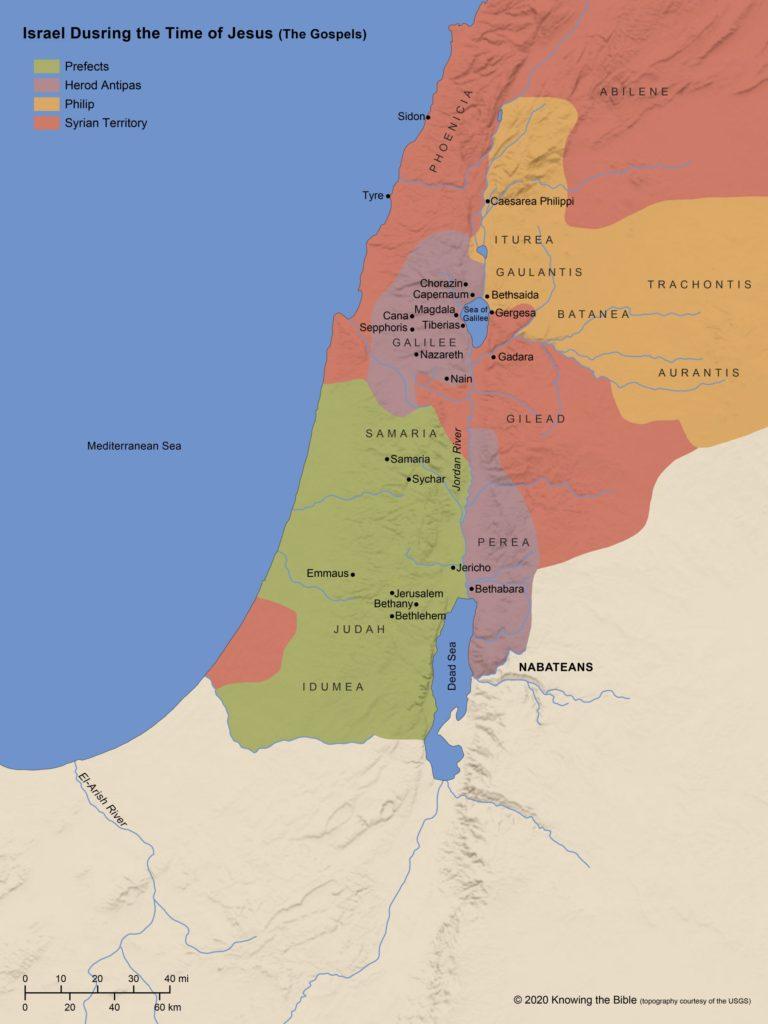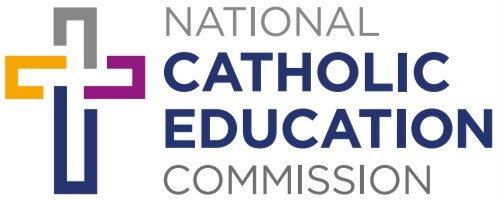Jesus Heals Two Blind Men
29 As they were leaving Jericho, a large crowd followed him. 30 There were two blind men sitting by the roadside. When they heard that Jesus was passing by, they shouted, “Lord, have mercy on us, Son of David!” 31 The crowd sternly ordered them to be quiet; but they shouted even more loudly, “Have mercy on us, Lord, Son of David!” 32 Jesus stood still and called them, saying, “What do you want me to do for you?” 33 They said to him, “Lord, let our eyes be opened.” 34 Moved with compassion, Jesus touched their eyes. Immediately they regained their sight and followed him.
New Revised Standard Version Bible: Catholic Edition, copyright © 1989, 1993 the Division of Christian Education of the National Council of the Churches of Christ in the United States of America. Used by permission. All rights reserved.
What to do with this educator’s commentary
This commentary invites you as a teacher to engage with and interpret the passage. Allow the text to speak first. The commentary suggests that you ask yourself various questions that will aid your interpretation. They will help you answer for yourself the question in the last words of the text: ‘what does this mean?’
This educator’s commentary is not a ‘finished package’. It is for your engagement with the text. You then go on to plan how you enable your students to work with the text.
Both you and your students are the agents of interpretation. The ‘Worlds of the Text’ offer a structure, a conversation between the worlds of the author and the setting of the text; the world of the text; and the world of reader. In your personal reflection and in your teaching all three worlds should be integrated as they rely on each other.
In your teaching you are encouraged to ask your students to engage with the text in a dialogical way, to explore and interpret it, to share their own interpretation and to listen to that of others before they engage with the way the text might relate to a topic or unit of work being studied.
Structure of the commentary:
The world of the author’s community
The world at the time of the text
Questions for the teacher
Text & textual features
Characters & setting
Ideas / phrases / concepts
Questions for the teacher
The world in front of the text
Questions for the teacher
Meaning for today / challenges
Church interpretations & usage
The World Behind the Text
See general introduction to Matthew.
The world of the text
Text & textual features
At the start of Chapter 19, Jesus leaves Galilee for the last time and travels to Jerusalem. Along the way, he continues to demonstrate the values of the Kingdom of God through his actions and words. While healing those in need, Jesus also attempts to teach the disciples the distinctive way of living in the Kingdom.
This story occurs in all three synoptic gospels (Matthew 20:29-34; Mark 10:46-62 and Luke 18: 35-43) but with slight variations between accounts. All three Gospels also place this story as the final episode before Jesus’ triumphant entry into Jerusalem.
Sources: This story in Matthew’s Gospel is based upon the story found in the Gospel of Mark. While the author follows the order of the narrative as found in Mark’s Gospel, the author does make some changes so that the story addresses a need in the Matthean community.
One of these changes, which the author of the Gospel of Matthew uses through his/her Gospel, is to double the number of characters found in Mark’s Gospel. In Mark’s Gospel, there is one blind person and he is called Bartimaeus. In Matthew’s story there are two blind beggars but they are never named. One theory proposed for this ‘doubling’ is that two people are more indicative of a community than just an individual.
Miracle: This narrative is called a Miracle story. In first century Palestine, a miracle was understood in quite a different way to how a miracle is understood in the twenty-first century. In the contemporary world, a miracle is understood as something incredible which defies the laws of nature and science. First century Jews did not have any comprehension of the laws of science and nature. They believed that God was always present and ever acting in the world so the only force in nature was that of God. Everything that occurred in the world was an act of God and therefore, a ‘miracle’.
The Jewish oral tradition recounted the ‘signs’ of God’s presence in the world. These signs pointed towards a belief in an ever loving and benevolent God. Sometimes these ‘signs’ of God were manifested in extraordinary events which the contemporary world would call a miracle. However, in first century Palestine this extraordinary event was evidence of a loving and generous God.
As part of Jesus’ mission he performed ‘signs’ to reveal God’s presence in the world and also to teach others about the Kingdom of God. A healing occurs on two levels. Firstly, there is the physical healing where the physical ailment is reversed. In this story, the two blind beggars have their sight restored. Secondly, a spiritual healing occurs as the person who is healed is restored to his/her community and, therefore, fullness of life.
The power of the miracle is less about the physical healing and more about the spiritual healing. A healing story is about the power of God’s kingdom being revealed in the life and actions of Jesus. Miracles are not proof of Jesus’ identity but rather it demonstrates God’s will and desire for people to reclaim their humanity.
Characters & setting
Two Blind Men
While the two blind men did not have physical sight, they did ‘see’ Jesus as the Son of David, the Messiah. After their sight was healed, the two beggars followed Jesus. This contrasts with the disciples who followed Jesus but did not truly ‘see’ Jesus nor understand his mission. In writing this story for his community, the author of Matthew’s Gospel wanted to show that not only individuals but communities can also be blind.
Jericho

is located in the region of Judea, north of the Dead Sea and east of Jerusalem. It is thought to be one of the oldest towns in the world. Travellers from Galilee would typically follow the Jordan Valley and rest overnight in Jericho. They would then travel uphill through the wilderness region (desert) into Jerusalem.
Jerusalem

Jerusalem was was the economic, religious and political centre for Jews. It is located on a ridge so travelling into Jerusalem involves going up into the city. For Jews, Jerusalem was the centre of the world as they believed God dwelt in the Temple. At the time of Jesus, Jerusalem was under the control of the Romans.
Crowd
In ancient cultures, it was common for towns folk to travel out of the city to welcome an approaching dignitary. The crowd tried to silence the two blind beggars as they thought the beggars would embarrass the town in front of such an important teacher as Jesus.
Ideas/phrases/concepts
Son of David
This term was used by the Jews in reference to the Messiah. The author of Matthew’s Gospel depicts Jesus as the Son of David, the long awaited Messiah. In the Davidic Covenant, God promised to send a Messiah who would establish God’s Kingdom on earth and this Kingdom would endure forever.
The Jews expected the Messiah to be a political leader who would free Israel from captivity and bring in peace and justice. However, Jesus fulfilled this promise in a deeper sense and not as a political king. Instead Jesus’ Messianic agenda was to free humankind from whatever alienated it from God.
Lord
The term Lord was used by an inferior when addressing a superior. It is used in the Scriptures when addressing God. When Jesus is called Lord, it is alluding to his divinity. Twice in this story, the two blind men address Jesus as Lord. This is an expression of faith.
Blindness
In the first century, a prevailing Jewish belief was that wealth and good health were rewards for living a virtuous life. Therefore, blindness and other illnesses were believed to be a punishment for sin. It was also believed that the sins of the parents could be transferred to their children and this was manifested in the form of blindness and other ailments. It was a source of great shame to both the individual and their family as it was believed to be a sign that the family had offended God in some way.
Blindness was a common and also one of the worse ailments that a person could have in first century Palestine. Firstly it was permanent and this meant that the blind person was completely dependent upon others as the blind person would never provide for themselves. Consequently, they were forced to become beggars.
Compassion

The two blind men asked for compassion. The Good News of the Kingdom of God was made concrete through Jesus’ healing actions. In this story, Jesus’ action gives expression to God’s compassion for the lost and needy. In restoring the sight of the two blind men, Jesus is also restoring them to fullness of life.
Follow Me
To follow Jesus means to become a disciple. In this story, the two blind men show true discipleship by following Jesus into Jerusalem upon being healed.
Mercy
To request mercy of another reflected that the person requesting mercy had absolutely no social status. The two blind men ask Jesus to show them mercy.
Questions for the teacher:
The world in front of the text
Questions for the teacher:
Please reflect on these questions before reading this section and then use the material below to enrich your responsiveness to the text.
Meaning for today/challenges
Just as the author of Matthew’s Gospel intended to use this story as a lesson about the Kingdom of God and discipleship for the author’s own community. Consequently it is also a story that is still significant for followers of Jesus in every time. The Kingdom was central to Jesus’ teachings and he lets people experience the values of the Kingdom through his words and actions such as the expressions of compassion, mercy etc. Followers of Jesus, are:
- Called to perform works of mercy to people in need in the world.
- Challenged to have their own blindness healed,
- Called to look beyond labels placed on people
- Called to honour the dignity of the other and not just ‘see’ the disease.
- Challenged to express the values of the Kingdom even when they may be at odds with the prevailing culture.
- Challenged to see the ‘signs’ of God breaking into the world
- Challenged to show compassion to those in need.
Liturgical usage
This story, Matthew 20:29-34, is not included as a gospel reading in either the Sunday or Weekday cycle of readings.
